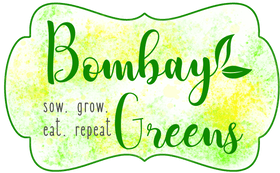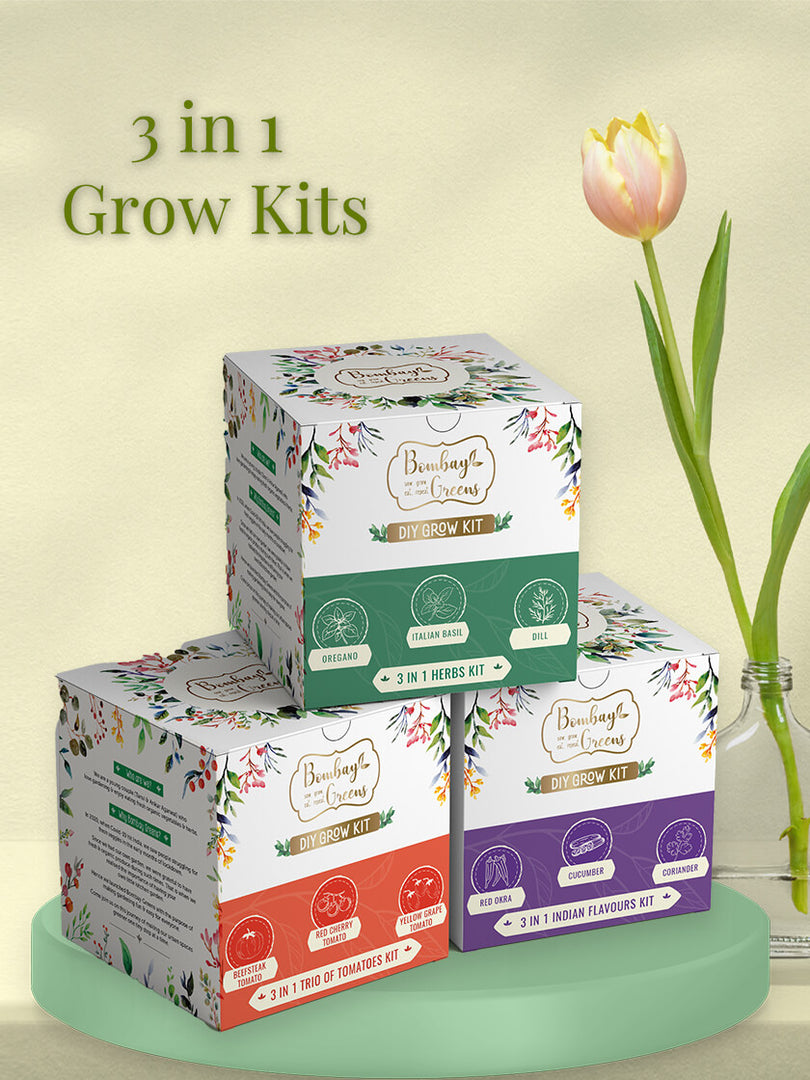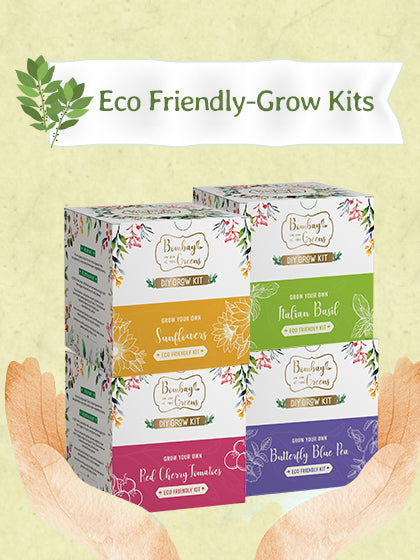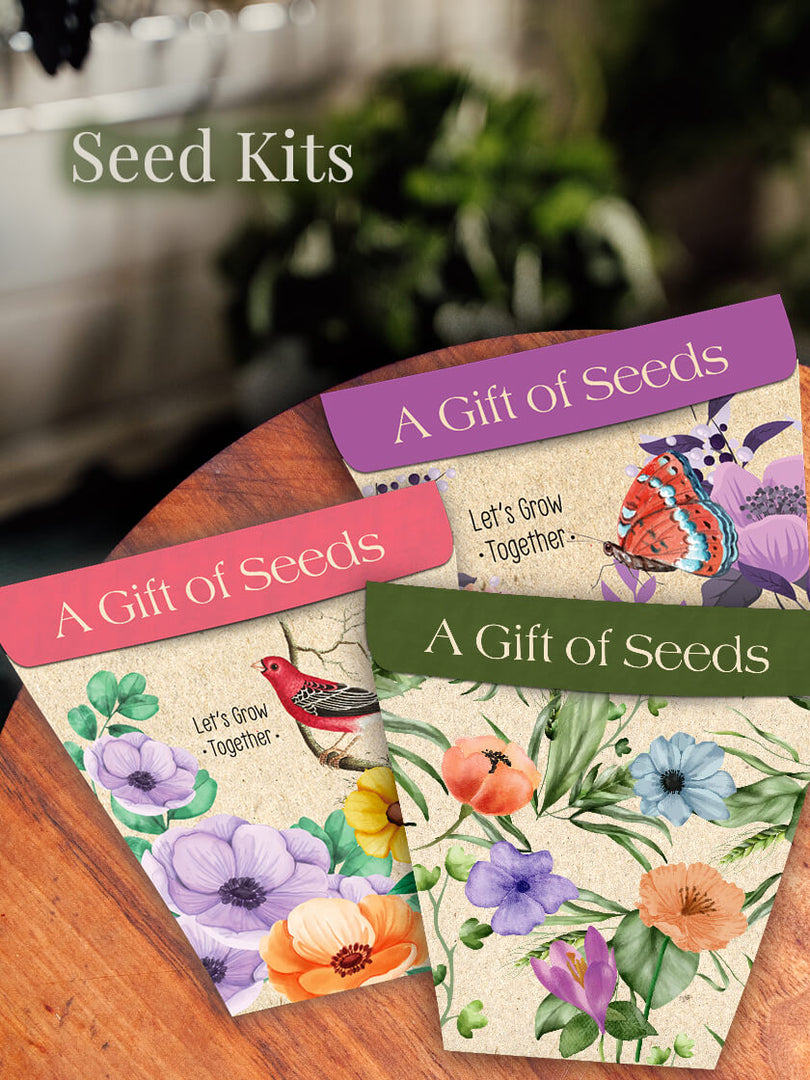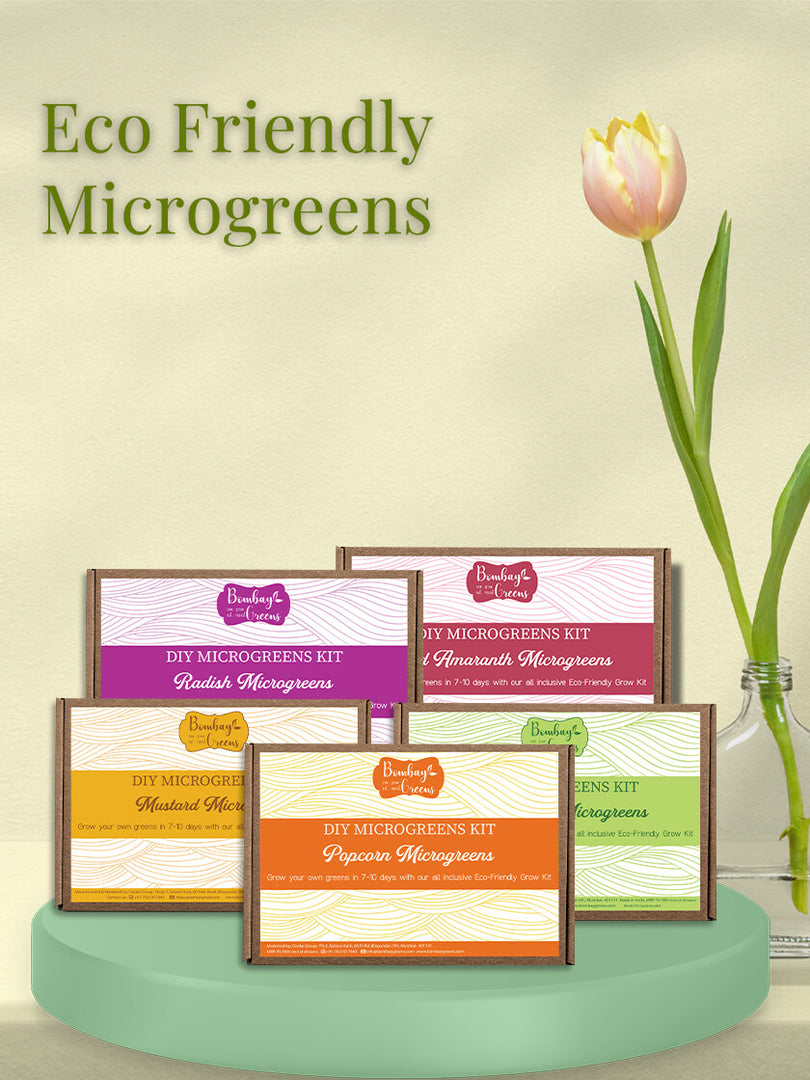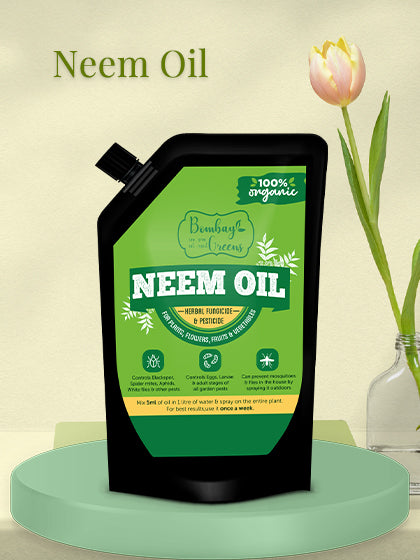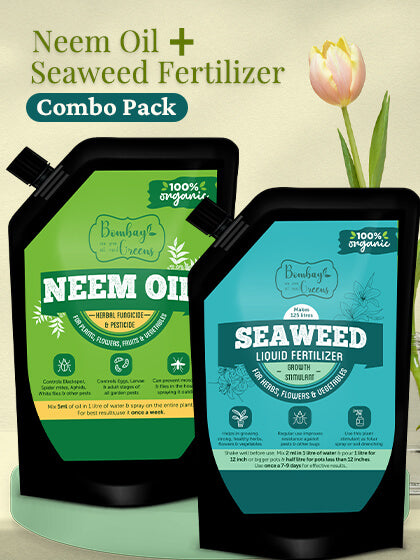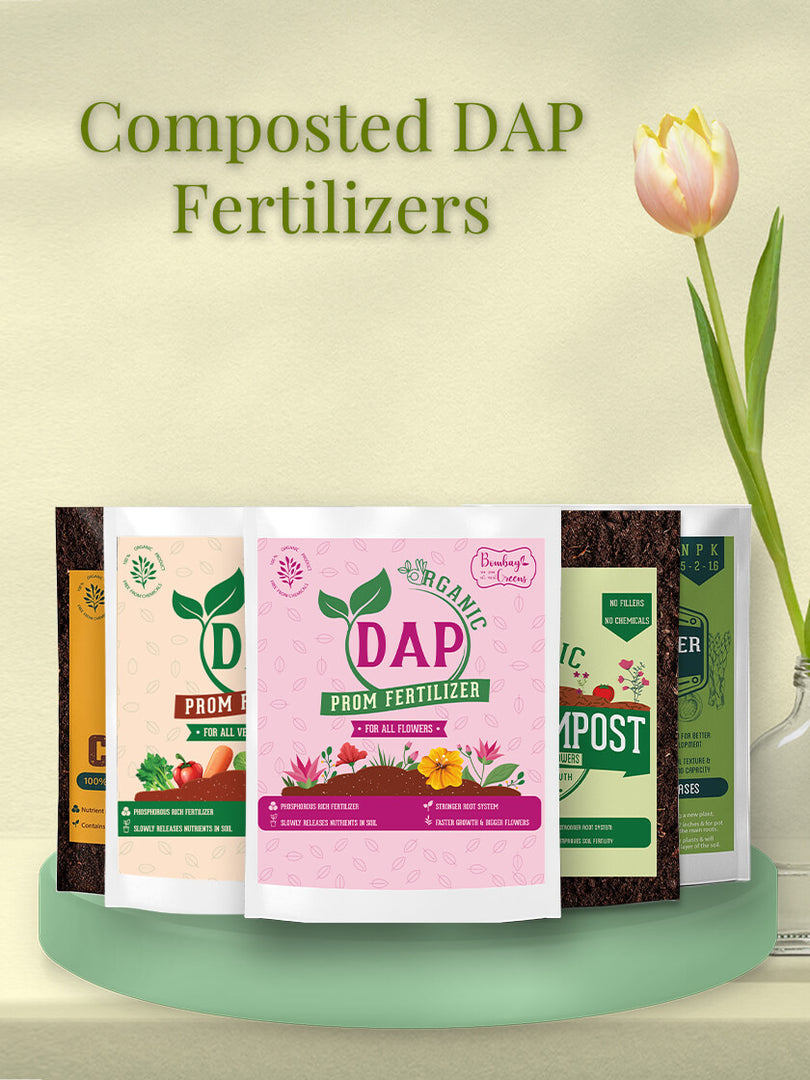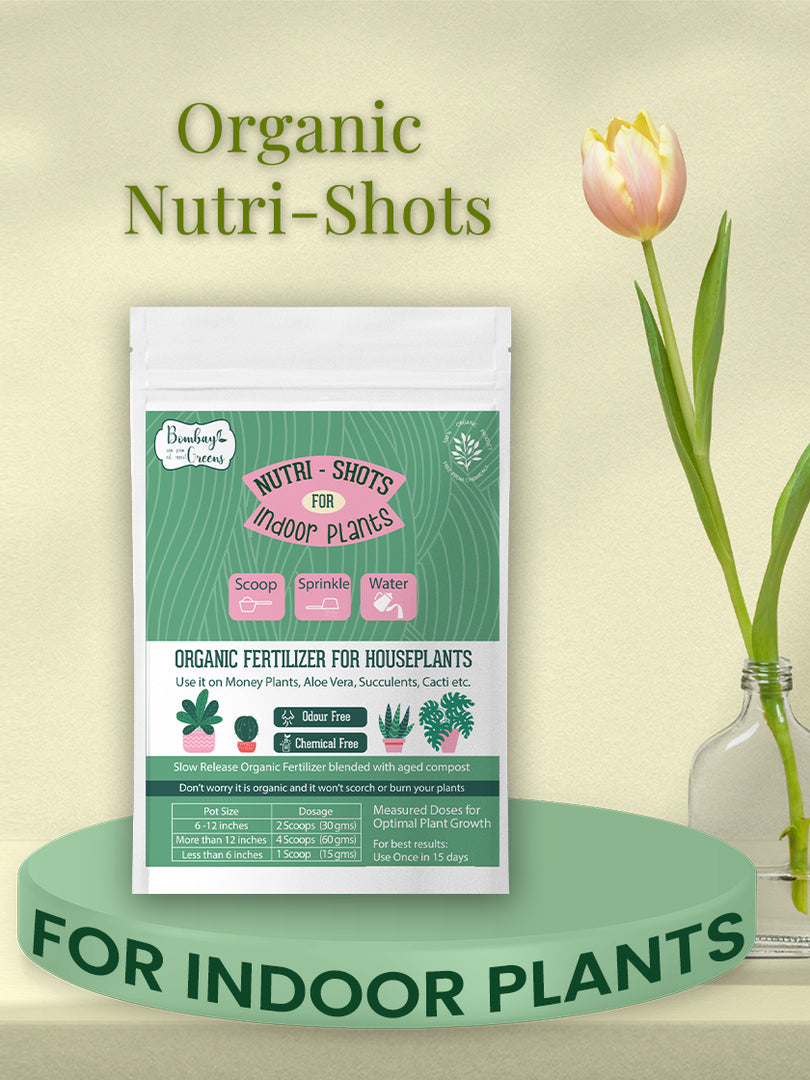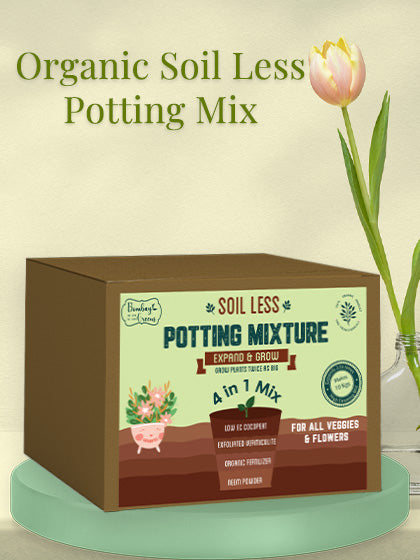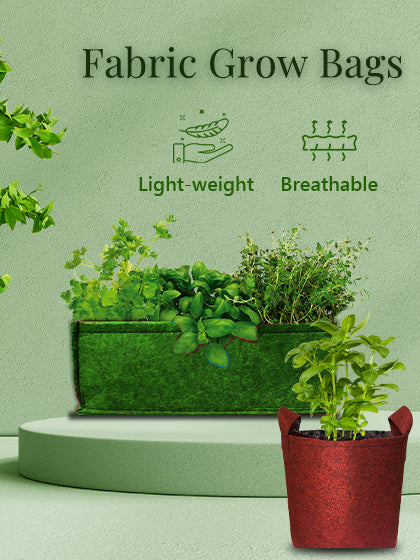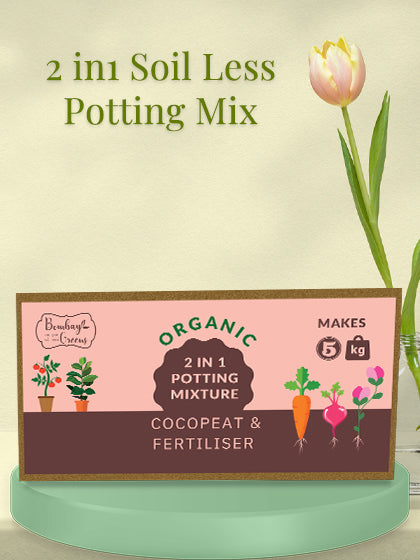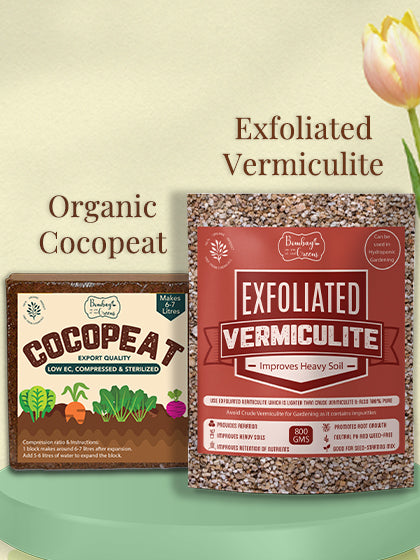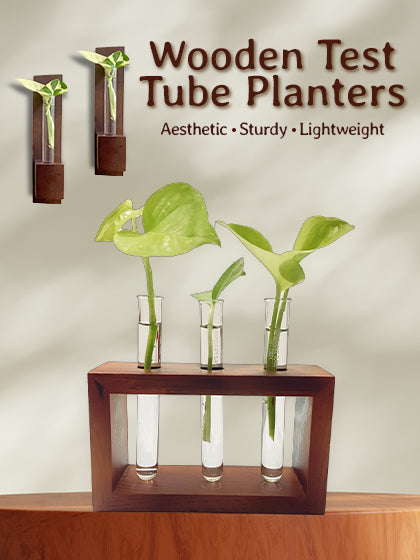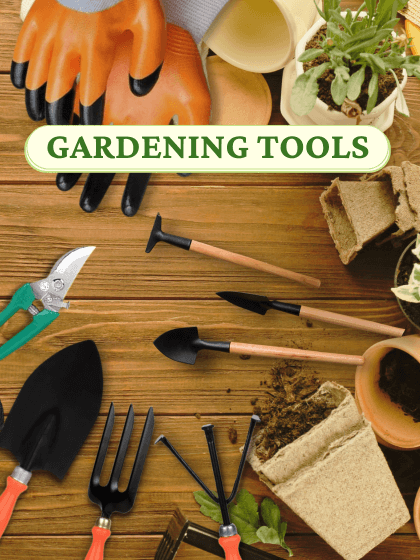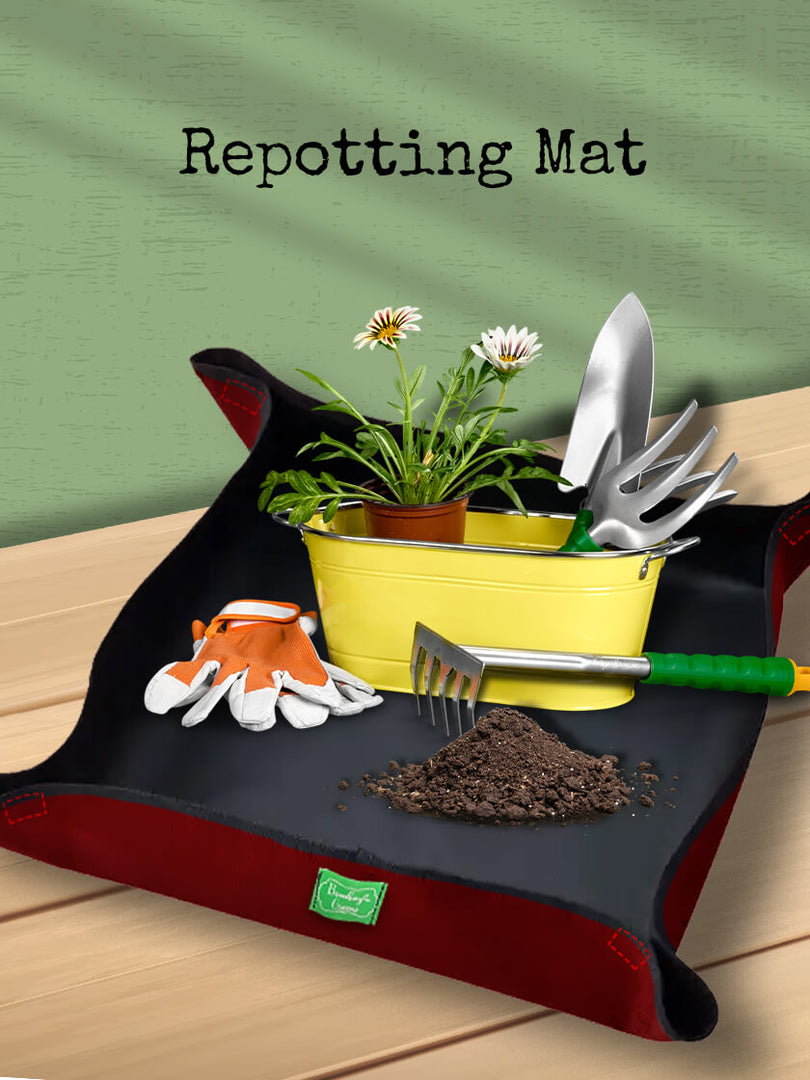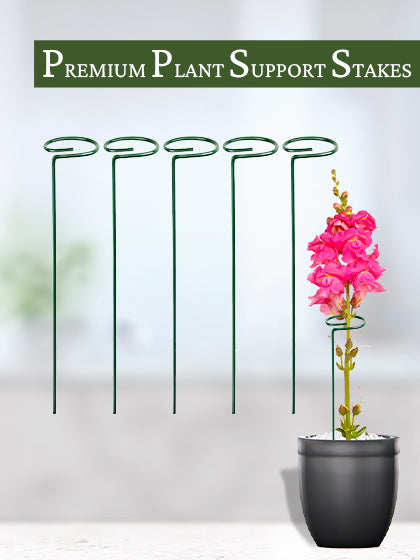We all love our greens and having a burst of green indoors too. And pots come with their own set of hassles, don’t they? Are you one of those who want to plant many greens but do not have enough space at your house or in the garden? Well, fabric grow bags could be an alternative for you!
In the past few years, gardeners have started using them instead of the classic pots available in the market for growing plants. This is because of the numerous advantages of these grow bags, making them a new favourite!
WHAT ARE FABRIC GROW BAGS?
They are a newer and smarter alternative to using earthen or plastic plant containers. These grow bags are made from fabric and recycled polyethylene terephthalate (PET), that is thick enough to hold the soil and plant within it, yet porous to ensure that air flows through the soil. You can use them for growing flowers, vegetables, and fruits as well as for your house plants in your balcony, garden, or inside your house too!
WHAT ARE THE BENEFITS OF FABRIC GROW BAGS?

They are better than the classic earthen or plastic pots for growing plants. Here are a few advantages of using them over pots:
No Need to Drill Holes
Unlike classic earthen or plastic pots, fabric grow bags does not require drilling holes to remove excess water. These breathable fabric grow bags are porous, which allows an exit for excess water.
Higher compatibility
Fabric grow bags or vegetable grow bags are compatible with any soil, compost, or even a soil-free medium. This increases the flexibility of choosing any medium for growing plants.
Higher water permeability
They are porous, allowing drainage of all the excess water from your plants. Due to this, excess water can quickly come out and prevent your plants from withering due to overwatering.

Better air circulation
They also aid in exchanging three main gases that your dear plants utilize, namely oxygen, nitrogen, and carbon dioxide. This helps in better nutrients exchange, and as a result, the roots grow better.
Suitable for microbial growth
In addition to the circulation of gases within the soil, fabric grow bags also provide air for microbial growth, which benefits the soil in the long run.
Contains handle on both sides
These eco-friendly bags are super lightweight and come with handles on both sides, making it easier to hold or move the bag containing the plant. Also, the bigger your grow bag is, the more soil it can have, making it heavier. In such cases, handles make it easier to operate such bags.

Eco-friendly in Nature
Fabric grow bags can easily last for three to four years depending on the climate. Also, they are eco-friendly, which is a huge plus in today’s times. No one would like to add to landfills by dumping plastic plant containers in them!
Diversity in shapes and sizes
Garden bags for planting are highly customizable. Unlike earthen or plastic plant containers, you can decide which one you want from the different materials available for grow bags for plants. Fabric grow bags are available in a huge variety of sizes and shapes, so depending upon the size of the plant, you can choose among the options.
Diversity in colours
In addition to different shapes and sizes, grow bags come in several colours like green and maroon, which can make your garden look more attractive.
Requires lesser space
Using such bags is much simpler than using pots as they do not require much space. Also, since these grow bags for plants are flexible, people have been using them as garden bags for planting tomatoes and other fruits and vegetables. They occupy lesser space which can aid in growing a variety of plants in the same area that you have.
Compatible with soil or soil-less mixes
You can switch to fabric grow bags if your garden soil is not very fertile. You can easily add store-bought soil mixes available for planting purposes and add to the soil in these grow bags for gardening.
WHAT ARE THE DISADVANTAGES OF GROW BAGS?
Despite the host of benefits of grow bags for plants, there are certain disadvantages to plastic grow bags, making them unsuitable for growing plants. Plastic grow bags can retain moisture in the soil; however, the exchange of gases is not as effective as a grow bag made from cloth. However, you should opt for grow bags as they are made from fabric and recycled plastic and have more benefits than disadvantages.
HOW TO USE GROW BAGS?
Firstly, you must choose the perfect size for your plants. Here is our guide to selecting the ideal size of grow bag for your plants:

-
6x7.5 inches for plants like coriander, spinach, tulsi, lettuce, and parsley.
-
8x8 inches for flowers and herbs like marigold, calendula, chamomile, mint, and basil.
-
10x10 inches for flowers and vegetables like butterfly pea, roselle chillies, okra, and kale.
-
12x12 inches for fruits and vegetables like capsicum, cabbage, zucchini, cucumber, broccoli, tomato, and watermelon.
-
18x7x5.5 inches for growing more quantity of small plants like spinach, coriander, mint, lettuce, and parsley.
-
If needed, you can opt for bigger sizes, which can be used for growing bigger trees like pomegranate, guava, orange and papaya.
If you are still unsure how big a fabric grow bag you should buy, start with the bag of 6x7.5 inches. Grow smaller plants in them, and then as you get clarity on what you are adding to your grow bag vegetable garden, switch to bigger grow bags and separate the different plants.
In addition to this, it is also essential to keep such bags in the right location so that the bag gets enough light to grow plants.
Shifting from plastic or earthen pots to fabric grow bags can be a good alternative because of the tremendous benefits of fabric grow bags that make them the smarter, more eco-friendly, and more economical option to build your patch of green!

Tanvi Agarwal - Co-founder
Driven by a deep-seated love for nature and a keen entrepreneurial spirit, she co-founded Bombay Greens, transforming urban spaces into thriving green havens. Recognizing the need for accessible and sustainable gardening solutions in the bustling city, she poured her passion into building a brand that empowers individuals to cultivate their own green spaces, regardless of their location or experience. Her vision extends beyond simply selling gardening items; it's about fostering a community connected to nature, one balcony, rooftop, and windowsill at a time.
Back to top
